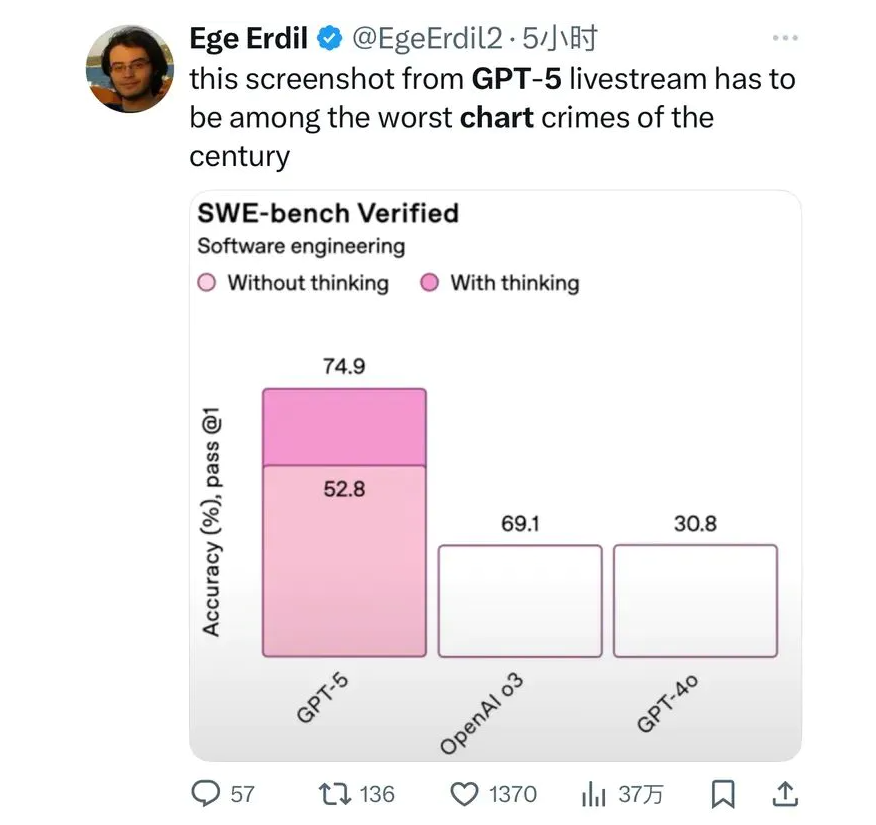The highly anticipated GPT-5 has been officially released, but the event did not live up to expectations. Although the new model achieved improvements in multiple dimensions, technical issues during the release and relatively conservative innovation made this launch both notable and controversial.
OpenAI adopted an "All in one" product strategy in this release, integrating various AI capabilities such as reasoning, programming, and speech into a single model. GPT-5 can automatically call the corresponding functional modules based on user-specific needs, simplifying the user experience through this intelligent resource allocation mechanism.

In terms of performance, GPT-5 set new records in multiple benchmark tests, especially showing significant advantages in programming capabilities. The new model is equipped with a "smart routing" system that can quickly assess problem complexity and automatically select the most suitable processing mode. The text processing window has been expanded to 1 million tokens, supporting longer document processing and analysis.
To enhance market competitiveness, OpenAI significantly adjusted its pricing strategy. Enterprise users can now choose different versions of GPT-5, such as the standard, mini, and nano editions, based on their budget and needs. The price of the mini version is even lower than Google's Gemini 25 Flash, demonstrating OpenAI's proactive attitude in the price war.

The commercial orientation was clearly evident at the event. OpenAI focused on introducing enterprise application cases, demonstrating how GPT-5 can help companies build customized applications. Notably, the GPT-5-chat model specifically designed for customer service scenarios emphasized low latency advantages, directly targeting the enterprise application market.
In practical application demonstrations, GPT-5 showed strong code generation and optimization capabilities. Even users without programming experience could quickly generate fully functional websites through natural language descriptions. For professional developers, GPT-5 can automatically analyze existing code and provide optimization suggestions, significantly improving development efficiency.

However, the event also exposed some issues. The most notable was the data error in the chart during the demonstration, which sparked extensive discussions on social media. Although OpenAI claims to have made progress in reducing the "hallucination" phenomenon in models, this inherent issue in large language models remains unsolved at its core.
From a technological development perspective, GPT-5 represents a gradual rather than revolutionary advancement. Although it achieved performance improvements in multiple specific areas, it is still far from true general artificial intelligence (AGI). This relatively conservative technological progress may reflect that the current AI development has entered a relatively stable optimization phase.
The overall commercial orientation of the event is worth noting. From sharing enterprise case studies to a multi-version pricing strategy, OpenAI clearly shifted its focus toward market expansion and revenue growth. This strategic shift may reflect the company's need to pay more attention to commercial outcomes in the fierce AI competition.
Despite the controversy, the release of GPT-5 has still driven the overall development of the AI industry. Its integrated feature design and more competitive pricing strategy have provided users with more choices and will prompt other AI companies to accelerate product iteration and price adjustments.
In summary, although GPT-5 did not achieve groundbreaking innovation, it has shown positive changes in function integration, performance optimization, and commercial strategies, reflecting OpenAI's pragmatic attitude in the market competition.
